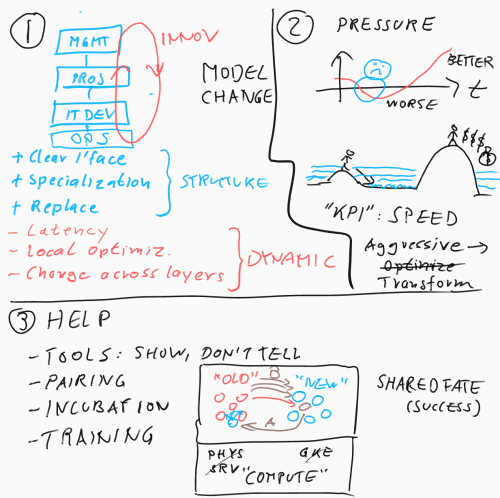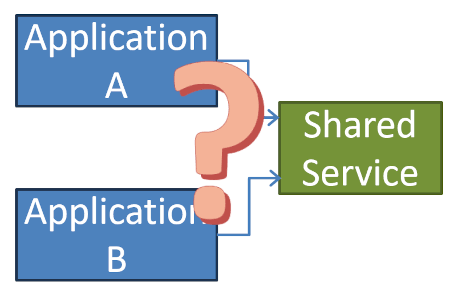Updated: Category: Strategy
CTOs, Chief Architects, and IT decision makers generally busy people. Because they have a demanding job, they are happy to receive information and advice, but also keenly manage their time. Given that a customer’s IT budget is a magnet for vendors, you’re going to want to stand out from the inevitable crowd when speaking to a senior exec.
Everyone is Busy
A colleague recently lamented that one of his customers doesn’t have time to meet. He was trying to explain it away with the chemistry not being right. Having spent 5 years as chief architect on the buying side, I shared my pretty cut-and-dried view on this:
- Everyone’s day has 24 hours, so it’s never about time, but about priorities.
- If you bring value, people will prioritize meeting with you, and make the time.
Senior execs didn’t get where they are by speaking to people based on chemistry. The conversation encouraged me to write down what I expected from vendor meetings during my time as a chief architect. Personal preferences tend to vary, so feel free to tune the “commandments” to your specific situation. I presume that you’ll see quite a few commonalities, though.
How to Talk to a CTO or Chief Architect
When I was a chief architect, I was generally “busy”, especially when asked for a meeting with a vendor. Too often such meetings just ended up me being asked for my “pain points” or product demos in (slight) disguise. On the other hand, I also very much enjoyed and learned from many other vendor meetings. What makes the difference? Here is a rough outline of what I expected in order to “make time”:
1. Tell me something I don’t know
While it’s good to ask questions, just asking for “pain points” and invariably mapping these back to the vendor’s latest product isn’t likely to be the conversation a CTO is going to make time for. I expected my counterpart to bring me new insights into industry trends or show me different ways to think about my problems. Or, for a complete change, tell me what didn’t work.
Now that I changed sides my ambition is to present decision makers with new mental models or different ways of looking at ways to address their problems. When talking to a CTO, assume they are well-read and well-informed, so rehashing the latest conference headlines (“Are you using DevOps?”) isn’t likely to get them excited. Bring them something new and original, even if it’s not perfect, and you’ll likely trigger an interesting conversation.
You may wonder how you can bring new things all the time. First, you don’t need a new idea for every meeting (see below). Second, you are unlikely to want to build a relationship with 100 CTOs. So, have a few good ideas and go with those. You will soon get new ideas from your discussions.
2. Tell me what you do for me
I have sat through countless meetings where the introduction round consists mostly of titles and past companies that people worked for. I sometimes counter this by stating that I am the only person who never worked for another cloud provider, making me “Google native” in a way.
All jokes aside, as a customer it’s not very helpful to me to hear that you worked for brand-name company X, Y, or Z and held such-and-such title. After all, I don’t think that having lived in, let’s say NYC, guarantees you to be a hipster (living in Portland raises the chances you are a pothead, though).
Instead of your past associations I want to hear what you have done for other people and even more importantly what you will do for me. Sorry, I am a little selfish^H^H^Hvalue-oriented and am interested in capabilities, not ingredients, both for systems and people.
3. Make it an eye-level conversation
Any senior decision maker is going to want to talk to someone at his or her level of experience. That’s not arrogance, but simply optimizes the ROI on the time invested. Take note that title doesn’t necessarily denote level of experience—most customer facing roles suffer from serious title inflation (I used to be a “Technical Director” - always makes me think I am George Lucas). Rather, it means talking to someone who has spent sufficient time solving the kind of problems the customer is facing to have credible answers.
Interestingly, many of the vendor’s customer-facing staff haven’t actually spent much time working on the IT side. While its helpful to see what other customers have done, they know the IT environment largely from the outside. I compare this to having read all the travel magazines and maybe having taken a guided tour, but never having actually lived in a place.
4. Bring the right people (and no one else)
Nothing is more annoying for a senior client than being vastly outnumbered by the vendor (we sometimes joked the “XYZ bus is here”). Not only is it awkward and ends up wasting 10 minutes with introductions, it also makes it nearly impossible to have an actual conversation (see below).
The absolute worst case is if each person is vying for air time, segmenting the meeting into 3-4 minute mini-monologues (or presentations) that start resembling a karaoke session. This usually happens when the vendor is more concerned with their internal structures (e.g. every person gets a point for having met the client), than with the customer’s needs. When working for a vendor, I once had a serious argument with my manager who tried to force me to drag my colleague, who had challenges getting executives engaged, along. Maybe bringin more people is right for the manager’s status report, but surely not for the customer.
The best sessions I had were with a senior person accompanied by the account manager (sales) who would do brief introductions and make sure action items are noted. Actually, I am sure these sessions were hugely beneficial for the account manager as well even though they stayed fairly quiet.
5. Let’s think together
Too often vendors come to tell the customer something. That’s well intended – I just said I expected to be told something I didn’t know. But the conversation doesn’t end there, it’s just the beginning. Bringing me a new idea or a new way to look at my problems is like tossing the ball into the court: now let’s play!
I am one of those people who has their best ideas when talking to other smart people. That’s why I regularly pilgrimage to Anguilla and other far-away places (someone’s gotta do it!) to have conversations with my peers. Likewise, having an actual conversation, playing off each other’s ideas and insights is the ultimate bliss of a vendor meeting. Most importantly, having a discussion doesn’t mean having to agree on everything. Most CTOs like to hear different points of views and opinions, as long as they are delivered with precision and integrity.
From my years as chief architect at Allianz I fondly remember two such conversations , one with Uli Homann from Microsoft and another with Bhaskar Sunkara from AppDynamics (later acquired by Cisco).
6. Don’t talk product
I once threatened to kick a vendor out of a meeting if they mention the name of their product one more time. It wasn’t about the product not being useful. But repeatedly falling back on the product-level is one of the biggest inhibitors of thinking together. Many people do want to hear about your product and likewise there’s tons of material out there, so don’t waste precious time by boring executives with product names and features.
Much more interesting is how your product fits into an overall strategy, what the preconditions for successful are, or what common pitfalls exist. It’s OK to talk about your product strategy, i.e. what assumptions and trade-offs you made when you developed your product (I reveal the two questions I asked every vendor in The Software Architect Elevator).
7. Don’t lecture me how to run my business
The other end of the spectrum also isn’t without perils. It’s natural for a vendor or consultant to want to help the customer. Sometimes, though, they get carried away a bit. They present the customer with their elaborate view of where the customer should be headed, naturally involving ample use of the preferred products.
Giving input is great, for example by highlighting how different technology can enable different business models. But careful: you are talking to someone who runs a potentially multi-Billion dollar business. You are not. You should assume your conversation partner knows how to run (or support) a successful business. So, keep these fancy industry blueprints for later—execs are not keen on getting a lecture, especially from someone who doesn’t come from their industry.
8. Leave me with some thought
 As a customer, after the conversation I want to be left with something that I can take and apply to my problems. This can be an abstract concept or a concrete recommendation.
As a customer, after the conversation I want to be left with something that I can take and apply to my problems. This can be an abstract concept or a concrete recommendation.
As a vendor I often draw sketches during the conversation (flip top touch screen PCs or tablets are great for that) and share them with my clients afterwards. Those can look like the sketch on the right (you can spot the rising ocean levels metaphor that’s the closing statement of my Architect Elevator Talk): they are unique, make a great leave-behind to remind your conversation partner of the discussion, and are infinitely more useful than another branded pen or notebook.
9. Make it a relationship
Lastly, and this is the one where I occasionally fail, is that if I like talking to a vendor representative, I very much want them to come again. The reason this happens too rarely is that the people who deliver on all of the above are extremely rare, so sales staff is tempted to shuttle them around from one meeting to the next (I did 5 countries in a week once).
Looking at the conversation as the beginning of a relationship implies two things:
- Start on a high note - put your best foot forward. That’s how you leave a good impression.
- Don’t rush things on your first date. If you build a trusted relationship, opportunity will come.
When representing a vendor I stated a very simple goal for my meeting with a CTO: he should ask for the next meeting. And he did. And it was the start of a great relationship that’s still going.
Conclusion
Although not every point might not be huge surprises, in unison they make an excellent checklist. I know how easy it is to get carried away in these conversations. I also do see blatant violations and the response is never positive. If you follow these guidelines, CTOs and chief architects will generally reward you with their most precious assets: time and trust.
Thanks to Manlio Grillo, Michael Plöd, and Michele Danieli for providing input! (and, yes, I prefer to take input from people whose first names begin with M….)
Make More Impact as an Architect

The Software Architect Elevator helps architects and IT professionals to take their role to the next level. By sharing the real-life journey of a chief architect, it shows how to influence organizations at the intersection of business and technology. Buy it on Amazon US, Amazon UK, Amazon Europe




